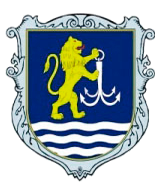MODEL OF TECHNOLOGICAL SYSTEM OF GRAIN TRANSPORTATION OF HARVESTING AND TRANSPORT COMPLEX OF AGROHOLDING
Abstract
Introduction. In many works it was found that the efficiency of grain production and its accelerated development should be provided by a progressive system of construction of production processes, consisting of three interrelated parameters: machinery, technology and organization. Purpose. This article expands the analytical provisions of the description of the technological system of grain transportation of the harvesting and transport complex in the conditions of agricultural holdings. Results. It was obtained that as part of the harvesting and transport complex of the agricultural holding of grain direction, road transport has its own transport process. The list of cargoes, which are grains of grain group of agricultural crops, Х(x1, x2, …, xn) with their technological properties U(u1, u2, …, un) are presented as an operand, and in the process of transportation their properties do not change, changes only their spatial location. The technology of the transport process of grain transportation consists of many transport cycles Ц(ц1, ц2, ..., цn), each of which is a function of its parameters. The whole technological system of grain transportation of the harvesting and transport complex can be represented by a mathematical model. This model takes into account the technological parameters of complex technical systems: compatibility of transport machines with agricultural machines, adaptability of complex technical systems to environmental conditions and technological properties of the operand, parameters of transport and technological cycles. In real transport processes, the operand performs several transport cycles during the day, each of which has its own parameters. Conclusions. In this paper, we show that the technology of grain transportation of agricultural holdings should be considered by the method of volumetric modeling, which is based on the calculations of the indivisible elementary cycle, and shows all the losses of the transport process of grain crops during harvest.
Downloads
References
2. Brown R., Richards A. Engineering principles of agricultural machinery. ASABE. 2018. Vol. 84. Iss. 2. P. 1120–1132.
3. Influence of the combine harvester parameter settings on harvest losses / M. Šotnar, J. Pospíšil, J. Mareček, T. Dokukilová, V. Novotný. Acta Technologica Agriculturae. 2018. Vol. 3. P. 105–108. URL: https://doi.org/10.2478/ata-2018-0019
4. Jain A., Palekar U. Aggregate production planning for a continuous reconfigurable manufacturing process. Computers & Operations Research. 2005. Vol. 32. Iss. 5. P. 1213–1236. URL: https://doi.org/10.1016/j.cor.2003.11.001
5. Change of technical condition and productivity of grain harvesters depending on term of operation / I. L. Rogovskii, L. L. Titova, S. A. Voinash, I. P. Troyanovskaya, V. A. Sokolova. IOP Conference Series: Earth and Environmental Science. 2021. Vol. 720. P. 012110. URL: https://doi.org/10.1088/1755-1315/720/1/012110
6. Almosawi A., ALkhafaji A., Alqazzaz K. Vibration transmission by combine harvester to the driver at different operative conditions during paddy harvest. International Journal of Science and Nature. 2016. Vol. 7. Iss. 1. P. 127–133.
7. Voronkov O. A., Rogovskii I. L. Analytical prerequisites to transport and technological systems of transportation of production of crop production. Globalization of scientific and educational space. Innovations of transport. Problems, experience, prospects : Theses of International Scientific Conference, Dresden (Germany), Paris (France), May 3–12, 2017. Severodonetsk, 2017. P. 47–50.
8. On the tactical and operational vehicle routing selection problem / M. Samà, P. Pellegrini, A. D’Ariano, J. Rodriguez, D. Pacciarelli. Transportation Research. 2017. Vol. 76. Iss. 1. P. 1–15. URL: https://doi.org/10.1016/j.trc.2016.12.010
9. Research of passage capacity of combine harvesters depending on agrobiological state of bread mass / I. M. Kuzmich, I. L. Rogovskii, L. L. Titova, O. V. Nadtochiy. IOP Conference Series: Earth and Environmental Science. 2021. Vol. 677. P. 052002. URL: https://doi.org/10.1088/1755-1315/677/5/052002
10. Harvesting and transport operations to optimise biomass supply chain and industrial biorefinery processes / R. Matindi, M. Masoud, P. Hobson, G. Kent, S. Liu. International Journal of Industrial Engineering Computations. 2018. Vol. 9. Iss. 3. P. 265–288. URL: https://doi.org/10.5267/j.ijiec.2017.9.001
11. Engine idling: a major cause of co emissions & increased fuel costs / M. Sarwar, S. Ullah, U. Farooq, M. Durrani. Journal of Operations and Logistics Management. 2017. Vol. 6. Iss. 2. P. 44–54.
12. Voronkov O. A., Rogovskii I. L. Intensification of transport process transport grain bread service working trailers. Strategy of Quality in Industry and Education : Proceedings of XIV International Conference, Varna (Bulgaria), June 4–7, 2018: in 2 vols. Varna, 2018. Vol. 2. P. 45–49.
13. Conceptual bases of system technology of designing of logistic schemes of harvesting and transportation of grain crops / I. L. Rogovskii, L. L. Titova, S. A. Voinash, L. V. Berezova, E. V. Timofeev, M. N. Kalimullin, V. A. Sokolova. IOP Conference Series: Earth and Environmental Science. 2021. Vol. 723. P. 032032. URL: https://doi.org/10.1088/1755-1315/723/3/032032
14. Modelling of harvesting machines’ technical parameters and prices / T. Yezekyan, F. Marinello, G. Armentano, S. Trestini, L. Sartori. Agriculture. 2020. Vol. 10. P. 194–203. URL: https://doi.org/10.3390/agriculture10060194





